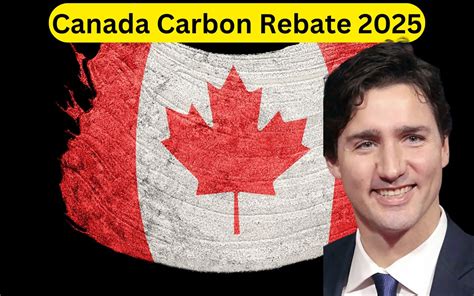Understanding the Carbon Rebate: What You Need to Know for October 2025
The carbon rebate system has become a cornerstone of policies aimed at reducing greenhouse gas emissions and combating climate change. As we approach October 2025, it’s essential for individuals, businesses, and policymakers to grasp the mechanics of this initiative. This article delves into what the carbon rebate is, how it works, and its implications for society as a whole.
What is the Carbon Rebate?
The carbon rebate, often referred to as a carbon dividend or climate rebate, is a financial return to taxpayers funded by carbon pricing initiatives. Governments impose a price on carbon emissions, incentivizing businesses and individuals to reduce their carbon footprint. The revenue generated from this pricing is then redistributed to citizens through rebates or dividends.
How Does the Carbon Rebate Work?
The mechanics of the carbon rebate are relatively straightforward. Here’s how it generally works:
- Carbon Pricing: The government sets a price on carbon emissions, usually through a carbon tax or cap-and-trade system. This pricing mechanism is designed to encourage a shift to renewable energy sources and promote energy efficiency.
- Revenue Generation: The revenue collected from carbon pricing is channeled into a fund. This fund serves as a pool of money that can be distributed as rebates to taxpayers.
- Distribution of Rebates: The rebates are then disbursed to citizens, typically on an annual basis. The amount each individual receives can vary based on factors like household size and income level.
The Rationale Behind the Carbon Rebate
The primary goal of the carbon rebate system is to motivate individuals and businesses to reduce their carbon emissions. By putting a financial incentive on carbon emissions, it encourages the adoption of cleaner technologies and practices. Moreover, the rebate mechanism ensures that lower-income households are not disproportionately affected by rising energy costs caused by carbon pricing.
Impact on Households
For households, the carbon rebate can have varying impacts. Here are a few key points to consider:
- Financial Relief: Many households can expect a financial return that offsets the cost of carbon pricing, particularly if they are proactive in reducing their carbon emissions.
- Promoting Energy Efficiency: Increased awareness of carbon costs can prompt families to invest in energy-efficient appliances, vehicles, or home upgrades, ultimately saving them money in the long run.
- Behavioral Change: The rebate system encourages behavioral shifts towards sustainable practices—such as using public transportation, carpooling, or adopting renewable energy sources.
Challenges and Criticism
Despite its advantages, the carbon rebate system is not without challenges and criticisms:
- Complexity of Implementation: The logistics of distributing rebates can be complicated, leading to delays or discrepancies in payments.
- Incentives Not Optimized: Some critics argue that the rebates may not be large enough to incentivize meaningful changes in behavior or industry practices.
- Political Opposition: Opposition to carbon pricing and rebate systems can come from various interest groups concerned about economic impacts, leading to political hurdles in implementation.
The Future of the Carbon Rebate
As we look toward October 2025, the landscape of carbon rebates and pricing is likely to evolve. Policymakers may fine-tune the parameters of the rebate system based on empirical data and trends. Furthermore, advances in technology and renewable energy can significantly influence the overall effectiveness of the carbon rebate as a tool for reducing emissions.
Conclusion
The carbon rebate system represents a vital step in the fight against climate change. By understanding how it works, individuals, businesses, and policymakers can better prepare for the implications on both economic and environmental fronts. As we navigate the complexities of climate policy, embracing the carbon rebate could be one of the most impactful measures to promote sustainability and foster economic equity.
FAQs
1. What is the purpose of the carbon rebate?
The carbon rebate aims to redistribute revenue generated from carbon pricing to taxpayers, encouraging lower emissions while providing financial relief, especially to lower-income households.
2. How are the rebate amounts determined?
Rebate amounts can vary based on factors such as household size, income level, and the total revenue generated from carbon pricing.
3. Can businesses receive carbon rebates?
Typically, carbon rebates are designed for individual taxpayers; however, businesses might benefit indirectly from overall reduced energy costs and the incentive to adopt greener practices.
4. What challenges does the carbon rebate system face?
Challenges include issues with the complexity of implementation, the adequacy of incentives, and political opposition.
5. How can I prepare for the carbon rebate in 2025?
To prepare, stay informed about the latest policies, consider reducing your carbon footprint now, and participate in community discussions on sustainability efforts.
Download Carbon Rebate October 2025
